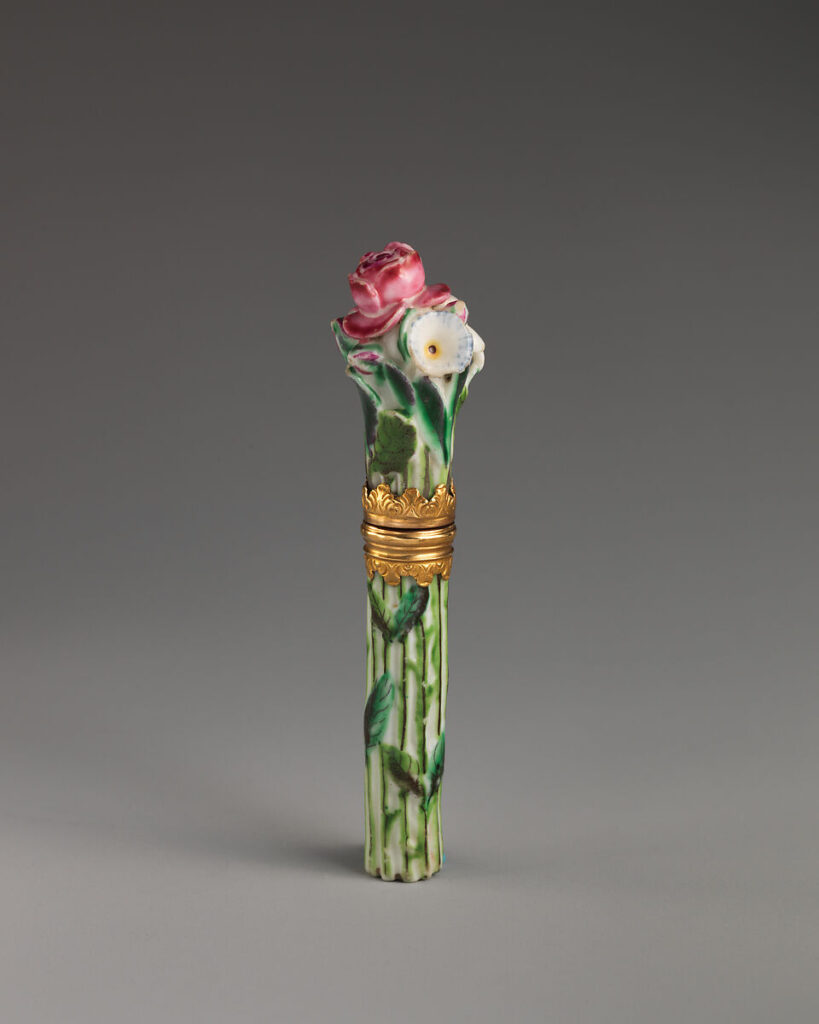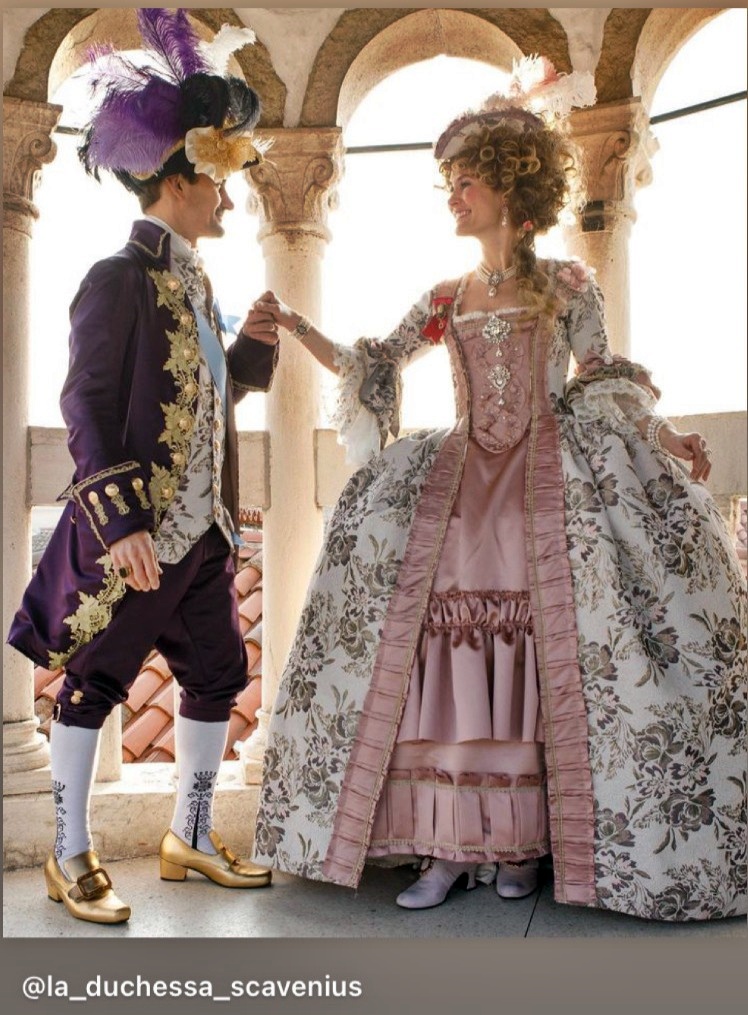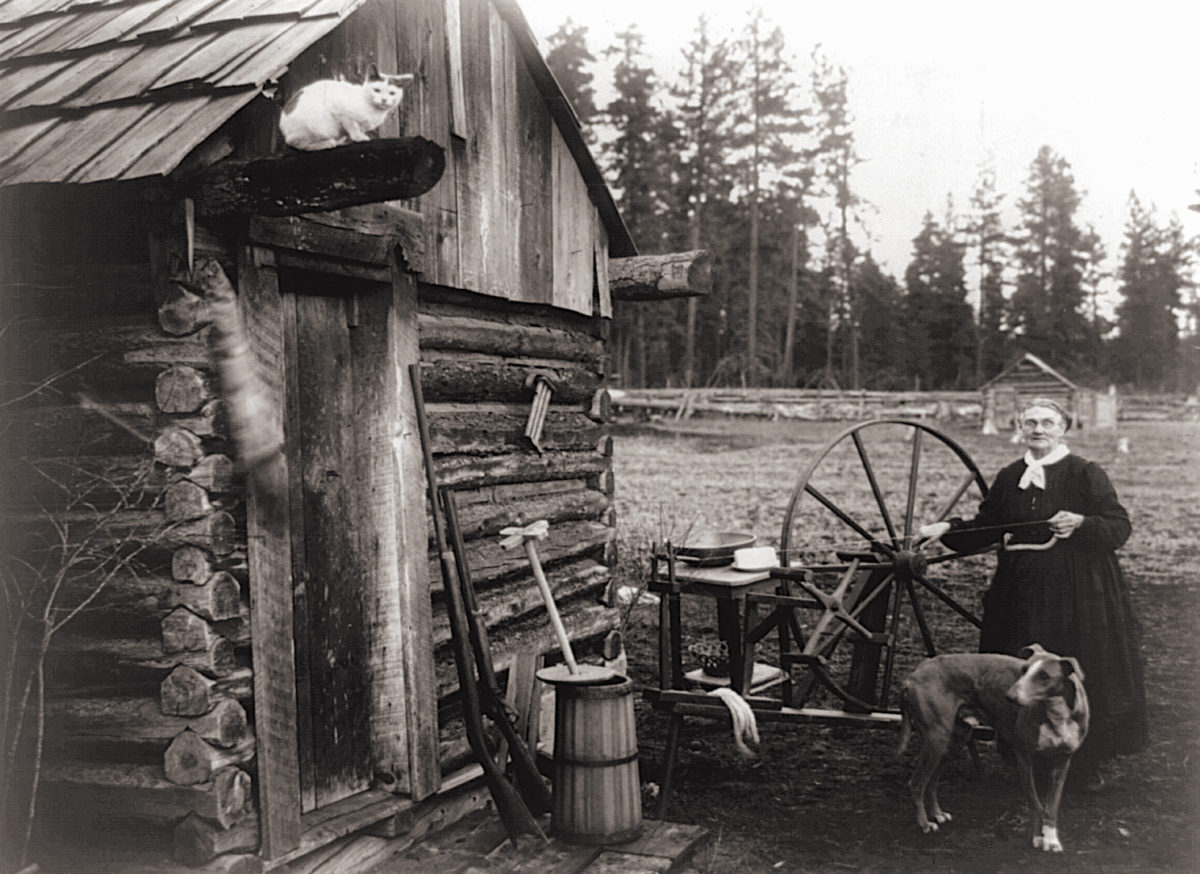A few weeks ago I did a post on the history of the corsage. While researching, I came across references to the most delightful accessory 18th and 19th-century women used to carry small bouquets with them. Sometimes called a tussie-mussie and sometimes simply a “bouquet holder,” it is a trinket that I hadn’t given much notice to despite my love of anything floral. It appears in paintings from the time periods it was most popular, but I somehow overlooked it.

I promised readers a further look and have enjoyed learning more about bouquet holders than corsages.
Do any of you have one in your collections?
But first, a word on vocabulary
The terms “tussie-mussie” and “nosegay” are often used interchangeably, but from what have learned, this is incorrect. While the two objects are often, if not always, used together, they are, in fact, two distinct objects.
Simply put, a “nosegay” refers to a small bouquet, while a “tussie-mussie” refers to the object used to house said bouquet.
Tussie-mussie’s origins
The origin of “tussie-mussie” word is dubious. Antique Trader says of the word’s derivation:
A “tussie” is a nosegay, a Middle English word for a small group of flowers held together in a little bouquet and that was held at nose level; “mussie” refers to the moss that was moistened and put around the stems of the flowers to keep them from wilting. Hence the name “tussie-mussie.”
However, Dictionary.com reads:
“There is no clear etymology for tussie-mussie “bunch of flowers, nosegay.” The Middle English form, tusemose, and the 17th-century form tussimussie, suggest an assumed Middle English tus or tusse “cluster of flowers.” Tussie-mussie entered English in the mid-15th century.”
The world may never know.
Nosegay’s origins
The origin of the word “nosegay” may be less mysterious. Merriam-Webster explains:
“Nosegay” is a homegrown word — that is, it originated in English. Fifteenth-century Middle English speakers joined “nose” (which meant then what it does today) with “gay” (which at the time meant “ornament”). That makes “nosegay” an appropriate term for a bunch of flowers, which is indeed an ornament that appeals to the nose. Today the word “nosegay” is especially common in the bridal business, where it usually refers to a specific type of bouquet: a round, tight bunch of flowers as opposed to a cascading bouquet or other type of arrangement.”
I will also point out that when it comes to the use of both nosegays and tussie-mussies many online sources will claim that they were primarily used to ward off unpleasant scents in days past, especially of the human variety. I suggest this is a faulty premise for multiple reasons, including the fact that soaps and perfumes in fact allowed people to smell pleasant for centuries. Furthermore, tussie-mussies/bouquet holders, especially the ones featured in this post, were typically used for formal occasions.
Function and fashion at once
What I do believe bouquet holders were used for is to allow the popular accessory of nosegays to be included in a woman’s outfit without dirtying her hands and while remaining free to use said hands.

Types of bouquet holders
The bouquet holders of the 1700s were less sophisticated than those seen in the peak of the trend, the mid-1800s. These were typically ceramic or porcelain and made to be held upright, securing the nosegay but not at any angle.

Some of them also served as lovely trinkets to decorate one’s vanity with. From what I can tell, the top would screw off but remain connected to the bottom via a small chain as seen here.


The tussie-mussie trend: 1830-1890
The fact that tussie-mussies peaked in popularity in the mid-1800s is proof enough for me that they were not purely intended to escape foul odors, as they were often handmade and the cosmetic industry was expanding rapidly during this time.
Instead, they became more intricate. The images below shows the function of a 19th-century tussie-mussie. The small bouquet would be secured inside the cone, with the needle then inserted into the middle to hold it in place. Then, many would be attached to a finger, allowing it to hang by one’s side during dancing and mingling.



The example below is of one that also included a pencil to be used to fill out dance cards at formal gatherings. How delightful!

And some exquisite designs allowed the bouquet to be displayed both on and off the finger.

















Thank you…I just found one at a thrift store this morning. Enjoyed your article.
I had read that these were used when women were walking outside to prevent them from having to smell the bad street smells, such as sewage etc.
Love this post! I learned something new today.